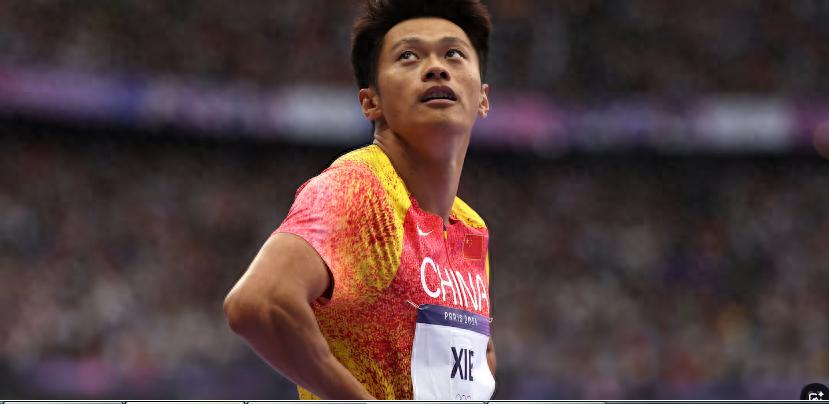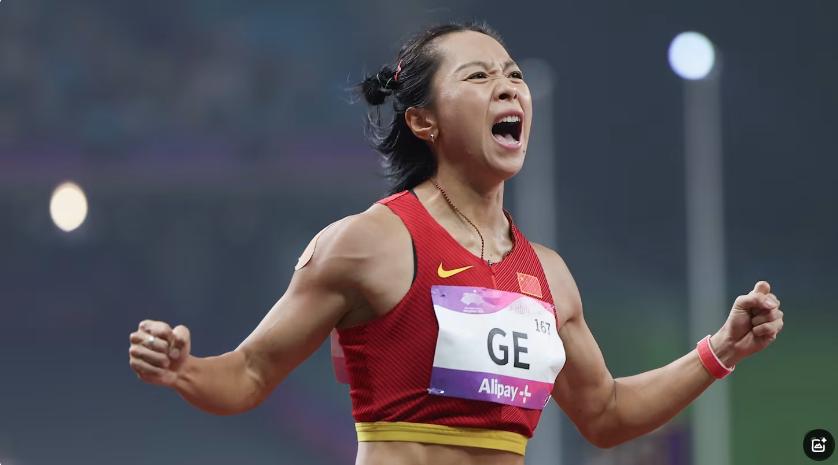List of the Chinese team at the 2025 Guangzhou World Athletics Relay: Xie Zhenye and Ge Manqi will lead the competition
The 2025 World Athletics Relay Championships will start in Guangzhou, marking the first time that the world's top relay event has landed in China. As the host, the Chinese track and field team sent its elite to the fullest, and all members of the six major events participated, including Xie Zhenye, Ge Manqi and other national team main forces, as well as a number of new generation forces who made their debut on the international stage. In the face of the direct competition for the ticket to the Tokyo World Championships, the Chinese team will take advantage of the home field to go all out to hit the good results.

Chinese men's sprint leader Xie Zhenye at the Paris 2024 Olympics
The 2025 World Athletics Relay Championships will be held on May 10-11 at the Tianhe Sports Center in Guangzhou. As the first edition of the world-class event to be held in China, the host Chinese track and field team will field a strong line-up covering all six events in the men's and women's and mixed categories, with veterans and rookies competing together with clear intentions to prepare for the World Championships in Tokyo and Los Angeles 2028.
A total of 734 athletes from 43 countries (regions) participated in the 4× 100m and 4×400m relay events in the men's, women's and mixed-gender categories. With the exception of the newly created mixed 4×100m events, the top 14 finishers in the remaining five events will qualify directly for the 2025 World Athletics Championships in Tokyo.
As the host, the Chinese team attacked all the lines and sent an eight-man lineup to participate in each event, covering all available players and substitutes, and the depth and flexibility of the squad were guaranteed.

Ge Manqi celebrates excitedly after winning the Asian Games in Hangzhou
Men's 4×100m
In the men's sprint, Xie Zhenye, the gold medalist in the men's 100m at the Hangzhou Asian Games, is undoubtedly the "trump card" of the Chinese team. He will form a relay team with Chen Jiapeng, Ho Kam-chun, Sze Kwan Ho, Wang Shengjie, Chan Kam-fung, Chan Guanfeng and Tsang Keli to compete in the men's 4×100m relay. This lineup combines the experienced main players of the national team with the young forces that have risen in the national arena in recent years, and the overall speed configuration is worth looking forward to.
Men's 4×400m
In the men's 4×400m events, the Chinese team includes Bao Chengzhe, Chen Zhisheng, Fu Haoran, Li Yiqing, Liang Baotang, Yu Dexiang, Zhang Qining and Zheng Chiyu. Most of these athletes have performed well in the National Games and the Asian Youth Championships, and they are responsible for narrowing the gap with the world's top teams in the middle and long distance relay events.
Women's 4×100m
The women's sprint relay will be led by Ge Manqi and Liang Xiaojing, two national team evergreens, with Chen Yujie, Li Yuting, Liu Yinglan, Li He, Kong Lingyao and Zhu Junying. China's women's 4×100m event has been at the forefront of Asia in recent years, and this combination of experience and speed is expected to usher in a breakthrough on the world stage.
Women's 4×400m
In the women's 4×400m relay, a team composed of Mo Jiadie, Huang Guifen, Huang Shiyao, Kong Yingying, Li Fengdan, Lian Zhi, Liu Yutong and Zhou Li will carry the banner. Most of them are the new generation of athletes who have stood out in the national championships and university competitions in recent years, representing the future direction of the Chinese women's middle and long distance relay.
Mix 4×100 meters
As a new event for the Los Angeles 2028 Olympic Games, the mixed 4×100m relay will make its debut on the World Athletics World Athletics (IAAF) stage in Guangzhou. The Chinese team sent four male players, Chen Guanfeng, Chen Jinfeng, Chen Jiapeng and Deng Xinrui, and four female players, Huang Shuping, Kong Lingyao, Li He and Li Yuting, formed a mixed lineup.
Mix 4×400 meters
In the mixed 4×400m, the Chinese team lineup is also stable and changing, consisting of Fu Haoran, Li Fengdan, Li Yiqing, Lian Zhi, Liang Baotang, Liu Yinglan, Mo Jiadie and Zhang Qining. Most of these athletes have the ability to compete in the 400m main event, and can flexibly switch the order of men and women according to tactical requirements, providing tactical support for coping with changes in the field.


Wonderfulshortvideo
AND DON’T EVEN GET ME STARTED ON ONER PLAYING MUNDO FOR THE FIRST TIME IN GAME 5 AT WORLDS 🤯


Paul Skenes Rookie of the Year 😐


Shohei Ohtani just hit one out of Dodger Stadium during batting practice. 😳


THE DODGERS ARE BACK ON TOP AS WORLD SERIES CHAMPIONS 👑


Filth from Roki to end the game!


That's our starting shortstop, Mookie Betts!


Magic's brewin' in LA.








 Links
Links
 Contact
Contact
 App
App


